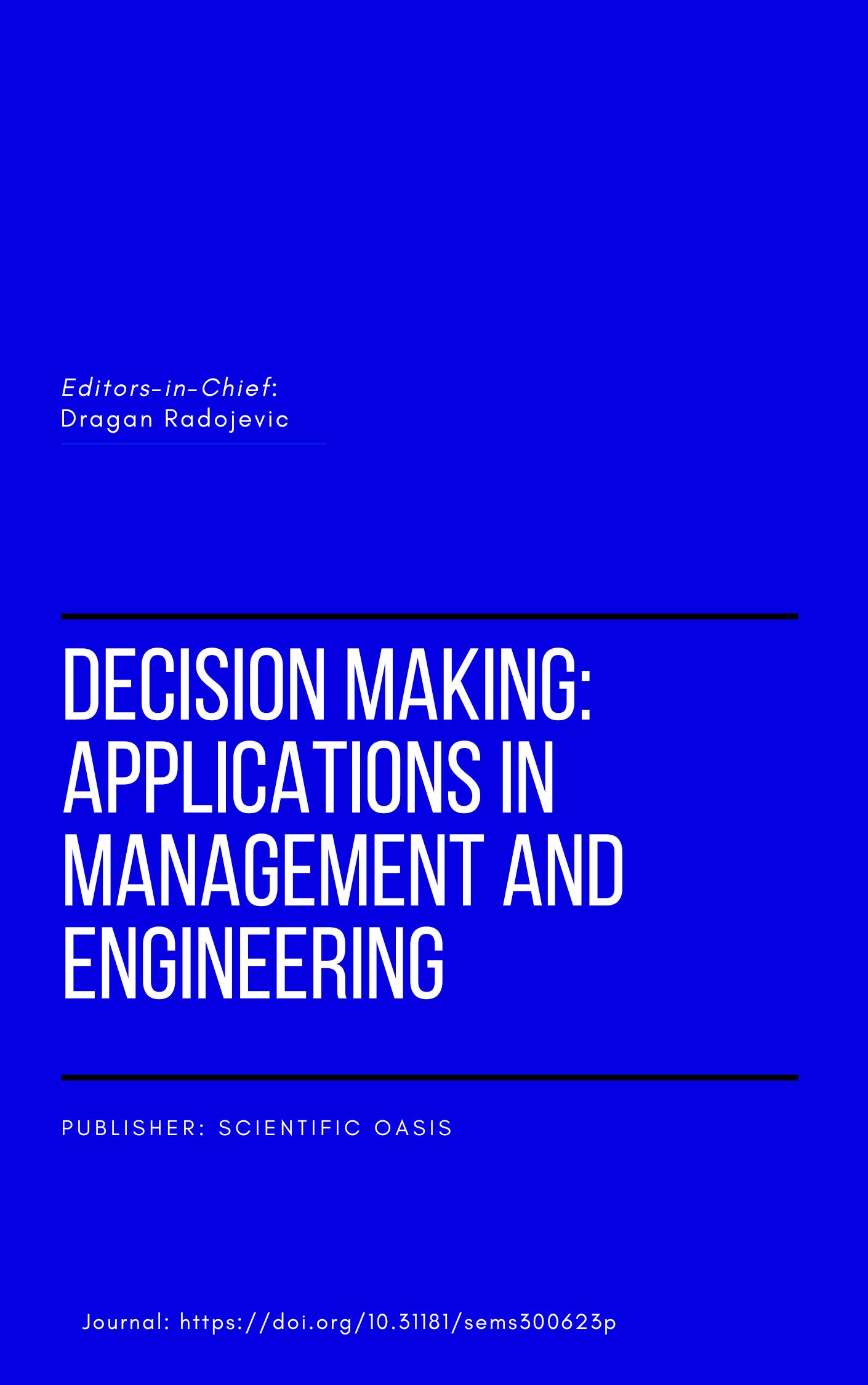Utilising an Interactive Deep Learning Framework to Enhance the Effectiveness of Intelligent Teaching Practices
DOI:
https://doi.org/10.31181/dmame8120251333Keywords:
Sustainable entrepreneurship, vocational education, artificial intelligence, green innovation, decision-making frameworkAbstract
Conventional teaching methodologies often fail to accommodate the diverse needs and learning styles of individual students, presenting a persistent challenge in education. This study proposes an innovative interactive deep learning framework that transforms intelligent teaching practices by integrating recurrent neural networks (RNNs). By leveraging the temporal modelling capabilities of RNNs within an interactive instructional environment, the framework dynamically analyses sequential patterns in student learning and engagement. A key contribution of this research is the development of a dynamic approach that utilises RNNs to model long-term dependencies and temporal dynamics within educational processes. This enables intelligent teaching systems to adapt in real time to students' behavioural patterns and evolving learning trajectories. Additionally, the incorporation of real-time feedback mechanisms allows educators to intervene and refine instructional strategies based on predictive insights generated by RNNs. This iterative and interactive process fosters a highly personalised learning experience, enhancing student engagement and knowledge retention. Empirical evaluations in real-world educational settings confirm the framework’s efficacy, demonstrating substantial improvements in teaching effectiveness and student learning outcomes. This study advances the development of adaptive and responsive intelligent teaching systems capable of delivering personalised instruction on a large scale. It makes a significant contribution to educational technology by introducing a transformative interactive deep learning framework enhanced by RNNs, ad-dressing the critical issue of personalisation in education while providing a scalable solution to improve intelligent teaching methodologies and student learning experiences
Downloads
References
[1] Sharma, A., Thakur, K., Kapoor, D. S., & Singh, K. J. (2023). Promoting deeper, meaningful learning in the contemporary educational landscape. In The Impact and Importance of Instructional Design in the Educational Landscape (pp. 112-152). IGI Global. https://doi.org/10.4018/978-1-6684-8208-7.ch005
[2] El-Hussein, M. O. M., & Cronje, J. C. (2010). Defining mobile learning in the higher education landscape. Journal of educational technology & society, 13(3), 12-21. https://www.jstor.org/stable/jeductechsoci.13.3.12
[3] Coates, M. (2010). Shaping a new educational landscape. https://www.torrossa.com/it/resources/an/5212600
[4] Wu, Z., Liu, H., & Deng, X. (2024). Teaching Practices for the Cultivation of “AI + X” Composite Talents in Higher Education: Challenges and Strategies. Education Science and Management, 2(3), 156-175. https://doi.org/10.56578/esm020304
[5] Oosthuizen, I. (2016). Self-directed learning research: An imperative for transforming the educational landscape. AOSIS. https://doi.org/10.4102/aosis.sdlr.2016.03 https://doi.org/10.4102/aosis.sdlr.2016.03
[6] Saqlain, M. (2023). Revolutionizing political education in Pakistan: An AI-Integrated approach. Educ. Sci. Manag., 1 (3), 122-131. https://doi.org/10.56578/esm010301
[7] Bozkurt, A., & Sharma, R. C. (2020). Education in normal, new normal, and next normal: Observations from the past, insights from the present and projections for the future. Asian Journal of Distance Education, 15(2), i-x. https://www.asianjde.com/ojs/index.php/AsianJDE/article/view/512
[8] Kumar, D., Haque, A., Mishra, K., Islam, F., Mishra, B. K., & Ahmad, S. (2023). Exploring the transformative role of artificial intelligence and metaverse in education: A comprehensive review. Metaverse Basic and Applied Research(2), 21. https://dialnet.unirioja.es/servlet/articulo?codigo=9869857#
[9] Zhou, L., & Li, J. (2023). The impact of ChatGPT on learning motivation: A study based on self-determination theory. Education Science and Management, 1(1), 19-29. https://doi.org/10.56578/esm010103
[10] Haleem, A., Javaid, M., Qadri, M. A., & Suman, R. (2022). Understanding the role of digital technologies in education: A review. Sustainable operations and computers, 3, 275-285. https://doi.org/10.1016/j.susoc.2022.05.004
[11] Seddik, S., Routaib, H., & Elhaddadi, A. (2023). Multi-variable time series decoding with long short-term memory and mixture attention. Acadlore Transactions on Machine Learning Research, 2(3), 154-169. https://doi.org/10.56578/ataiml020304
[12] Shickel, B., & Rashidi, P. (2020). Sequential interpretability: methods, applications, and future direction for understanding deep learning models in the context of sequential data. arXiv preprint arXiv:2004.12524. https://doi.org/10.48550/arXiv.2004.12524
[13] Wang, Y., Wu, H., Zhang, J., Gao, Z., Wang, J., Philip, S. Y., & Long, M. (2022). Predrnn: A recurrent neural network for spatiotemporal predictive learning. IEEE Transactions on Pattern Analysis and Machine Intelligence, 45(2), 2208-2225. https://doi.org/10.1109/TPAMI.2022.3165153
[14] Mao, S., & Sejdić, E. (2022). A review of recurrent neural network-based methods in computational physiology. IEEE transactions on neural networks and learning systems, 34(10), 6983-7003. https://doi.org/10.1109/TNNLS.2022.3145365
[15] Rahman, M. H., Yuan, S., Xie, C., & Sha, Z. (2020). Predicting human design decisions with deep recurrent neural network combining static and dynamic data. Design Science, 6, e15. https://doi.org/10.1017/dsj.2020.12
[16] Schmidt, B., & Hildebrandt, A. (2021). Deep learning in next-generation sequencing. Drug discovery today, 26(1), 173-180. https://doi.org/10.1016/j.drudis.2020.10.002
[17] Tembhurne, J. V., & Diwan, T. (2021). Sentiment analysis in textual, visual and multimodal inputs using recurrent neural networks. Multimedia Tools and Applications, 80(5), 6871-6910. https://doi.org/10.1007/s11042-020-10037-x
[18] Weerakody, P. B., Wong, K. W., Wang, G., & Ela, W. (2021). A review of irregular time series data handling with gated recurrent neural networks. Neurocomputing, 441, 161-178. https://doi.org/10.1016/j.neucom.2021.02.046
[19] Cossu, A., Carta, A., Lomonaco, V., & Bacciu, D. (2021). Continual learning for recurrent neural networks: an empirical evaluation. Neural Networks, 143, 607-627. https://doi.org/10.1016/j.neunet.2021.07.021
[20] Suissa, O., Elmalech, A., & Zhitomirsky‐Geffet, M. (2022). Text analysis using deep neural networks in digital humanities and information science. Journal of the Association for Information Science and Technology, 73(2), 268-287. https://doi.org/10.1002/asi.24544
[21] Shaik, T., Tao, X., Li, Y., Dann, C., McDonald, J., Redmond, P., & Galligan, L. (2022). A review of the trends and challenges in adopting natural language processing methods for education feedback analysis. Ieee Access, 10, 56720-56739. https://doi.org/10.1109/ACCESS.2022.3177752
[22] Li, C., & Xing, W. (2021). Natural language generation using deep learning to support MOOC learners. International Journal of Artificial Intelligence in Education, 31, 186-214. https://doi.org/10.1007/s40593-020-00235-x
[23] Khurana, D., Koli, A., Khatter, K., & Singh, S. (2023). Natural language processing: state of the art, current trends and challenges. Multimedia Tools and Applications, 82(3), 3713-3744. https://doi.org/10.1007/s11042-022-13428-4
[24] Goldberg, Y. (2017). Neural network methods in natural language processing. Morgan & Claypool Publishers. https://doi.org/10.2200/S00762ED1V01Y201703HLT037
[25] Chen, X., Zou, D., Xie, H., Cheng, G., & Liu, C. (2022). Two decades of artificial intelligence in education. Educational Technology & Society, 25(1), 28-47. https://www.jstor.org/stable/48647028
[26] Zhai, X., Chu, X., Chai, C. S., Jong, M. S. Y., Istenic, A., Spector, M., Liu, J.-B., Yuan, J., & Li, Y. (2021). A Review of Artificial Intelligence (AI) in Education from 2010 to 2020. Complexity, 2021(1), 8812542. https://doi.org/10.1155/2021/8812542
[27] Huang, J., Saleh, S., & Liu, Y. (2021). A review on artificial intelligence in education. Academic Journal of Interdisciplinary Studies, 10(3). https://doi.org/10.36941/ajis-2021-0077
[28] Mousavinasab, E., Zarifsanaiey, N., R. Niakan Kalhori, S., Rakhshan, M., Keikha, L., & Ghazi Saeedi, M. (2021). Intelligent tutoring systems: a systematic review of characteristics, applications, and evaluation methods. Interactive Learning Environments, 29(1), 142-163. https://doi.org/10.1080/10494820.2018.1558257
[29] Guo, L., Wang, D., Gu, F., Li, Y., Wang, Y., & Zhou, R. (2021). Evolution and trends in intelligent tutoring systems research: a multidisciplinary and scientometric view. Asia Pacific Education Review, 22(3), 441-461. https://doi.org/10.1007/s12564-021-09697-7
[30] Erümit, A. K., & Çetin, İ. (2020). Design framework of adaptive intelligent tutoring systems. Education and Information Technologies, 25(5), 4477-4500. https://doi.org/10.1007/s10639-020-10182-8
[31] Mislevy, R. J., Yan, D., Gobert, J., & Sao Pedro, M. (2020). Automated scoring in intelligent tutoring systems. In Handbook of automated scoring (pp. 403-422). Chapman and Hall/CRC. https://doi.org/10.1201/9781351264808-22
[32] Sharma, P., & Harkishan, M. (2022). Designing an intelligent tutoring system for computer programing in the Pacific. Education and Information Technologies, 27(5), 6197-6209. https://doi.org/10.1007/s10639-021-10882-9
[33] Ali, M., Siddique, A., Aftab, A., Abid, M. K., & Fuzail, M. (2024). AI-Powered customized learning paths: transforming data administration for students on digital platforms. Journal of Computing & Biomedical Informatics, 6(02), 195-204. https://jcbi.org/index.php/Main/article/view/299
[34] Amer-Yahia, S. (2022). Towards AI-powered data-driven education. Proceedings of the VLDB Endowment, 15(12), 3798-3806. https://doi.org/10.14778/3554821.3554900
[35] Dabingaya, M. (2022). Analyzing the effectiveness of AI-powered adaptive learning platforms in mathematics education. Interdisciplinary Journal Papier Human Review, 3(1), 1-7. https://doi.org/10.47667/ijphr.v3i1.226
[36] Imhof, C., Bergamin, P., & McGarrity, S. (2020). Implementation of adaptive learning systems: Current state and potential. Online teaching and learning in higher education, 93-115. https://doi.org/10.1007/978-3-030-48190-2_6
[37] Taylor, D. L., Yeung, M., & Bashet, A. (2021). Personalized and adaptive learning. Innovative learning environments in STEM higher education: Opportunities, Challenges, and Looking Forward, 17-34. https://doi.org/10.1007/978-3-030-58948-6
[38] Kabudi, T., Pappas, I., & Olsen, D. H. (2021). AI-enabled adaptive learning systems: A systematic mapping of the literature. Computers and education: Artificial intelligence, 2, 100017. https://doi.org/10.1016/j.caeai.2021.100017
[39] Bonassi, F., Farina, M., Xie, J., & Scattolini, R. (2022). On recurrent neural networks for learning-based control: recent results and ideas for future developments. Journal of Process Control, 114, 92-104. https://doi.org/10.1016/j.jprocont.2022.04.011
[40] Zhang, J., Zeng, Y., & Starly, B. (2021). Recurrent neural networks with long term temporal dependencies in machine tool wear diagnosis and prognosis. SN Applied Sciences, 3(4), 442. https://doi.org/10.1007/s42452-021-04427-5
[41] Uribarri, G., & Mindlin, G. B. (2022). Dynamical time series embeddings in recurrent neural networks. Chaos, Solitons & Fractals, 154, 111612. https://doi.org/10.1016/j.chaos.2021.111612
[42] Bieber, D., Sutton, C., Larochelle, H., & Tarlow, D. (2020). Learning to execute programs with instruction pointer attention graph neural networks. Advances in Neural Information Processing Systems, 33, 8626-8637. https://dl.acm.org/doi/abs/10.5555/3495724.3496447
[43] Khatter, H., & Ahlawat, A. K. (2020). An intelligent personalized web blog searching technique using fuzzy-based feedback recurrent neural network. Soft Computing, 24(12), 9321-9333. https://doi.org/10.1007/s00500-020-04891-y
[44] Celik, I., Dindar, M., Muukkonen, H., & Järvelä, S. (2022). The promises and challenges of artificial intelligence for teachers: A systematic review of research. TechTrends, 66(4), 616-630. https://doi.org/10.1007/s11528-022-00715-y
[45] Maier, U., & Klotz, C. (2022). Personalized feedback in digital learning environments: Classification framework and literature review. Computers and education: Artificial intelligence, 3, 100080. https://doi.org/10.1016/j.caeai.2022.100080
[46] Krechetov, I., & Romanenko, V. (2020). Implementing the adaptive learning techniques. Вопросы образования(2 (eng)), 252-277. https://doi.org/10.17323/1814-9545-2020-2-252-277
[47] Zia, T., Abbas, A., Habib, U., & Khan, M. S. (2020). Learning deep hierarchical and temporal recurrent neural networks with residual learning. International Journal of Machine Learning and Cybernetics, 11, 873-882. https://doi.org/10.1007/s13042-020-01063-0
[48] Ororbia, A., Mali, A., Giles, C. L., & Kifer, D. (2020). Continual learning of recurrent neural networks by locally aligning distributed representations. IEEE transactions on neural networks and learning systems, 31(10), 4267-4278. https://doi.org/10.1109/TNNLS.2019.2953622
[49] Ehret, B., Henning, C., Cervera, M. R., Meulemans, A., Von Oswald, J., & Grewe, B. F. (2020). Continual learning in recurrent neural networks. arXiv preprint arXiv:2006.12109. https://doi.org/10.48550/arXiv.2006.12109
[50] Iiduka, H. (2021). Appropriate learning rates of adaptive learning rate optimization algorithms for training deep neural networks. IEEE Transactions on Cybernetics, 52(12), 13250-13261. https://doi.org/10.1109/TCYB.2021.3107415
[51] Gao, L., Li, H., Liu, Z., Liu, Z., Wan, L., & Feng, W. (2021). RNN-transducer based Chinese sign language recognition. Neurocomputing, 434, 45-54. https://doi.org/10.1016/j.neucom.2020.12.006
[52] Orvieto, A., Smith, S. L., Gu, A., Fernando, A., Gulcehre, C., Pascanu, R., & De, S. (2023). Resurrecting recurrent neural networks for long sequences. International Conference on Machine Learning, https://proceedings.mlr.press/v202/orvieto23a.html
[53] Yin, B., Corradi, F., & Bohté, S. M. (2020). Effective and efficient computation with multiple-timescale spiking recurrent neural networks. International Conference on Neuromorphic Systems 2020, https://doi.org/10.1145/3407197.3407225
[54] Cahuantzi, R., Chen, X., & Güttel, S. (2023). A comparison of LSTM and GRU networks for learning symbolic sequences. Science and Information Conference, https://doi.org/10.1007/978-3-031-37963-5_53
[55] He, Y.-L., Li, X.-Y., Xu, Y., Zhu, Q.-X., & Lu, S. (2023). Novel distributed GRUs based on hybrid self-attention mechanism for dynamic soft sensing. IEEE Transactions on Automation Science and Engineering. https://doi.org/10.1109/TASE.2023.3309339
Downloads
Published
How to Cite
Issue
Section
License
Copyright (c) 2025 Decision Making: Applications in Management and Engineering

This work is licensed under a Creative Commons Attribution 4.0 International License.












